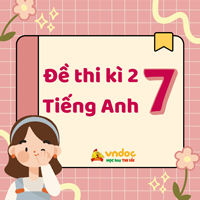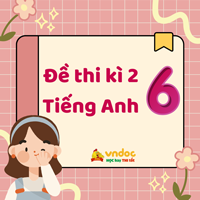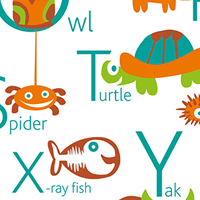Đề thi thử THPT Quốc gia môn Tiếng Anh năm 2016 trường THPT Bỉm Sơn, Thanh Hóa (Lần 3)
Đề thi thử THPT Quốc gia môn Tiếng Anh năm 2016 có đáp án
Trong bài viết sau, VnDoc xin giới thiệu Đề thi thử THPT Quốc gia môn Tiếng Anh năm 2016 trường THPT Bỉm Sơn, Thanh Hóa (Lần 3) với nhiều dạng bài tập hay có kèm đáp án cụ thể giúp các em học sinh lớp 12 củng cố kiến thức cho kỳ thi THPT Quốc gia sắp tới. Sau đây mời các em cùng thử sức.
Đề thi thử THPT Quốc gia môn Tiếng Anh năm 2016 trường THPT Đa Phúc, Hà Nội (Lần 3)
Đề thi thử THPT Quốc gia môn Tiếng Anh năm 2016 trường THPT Chuyên Nguyễn Huệ, Hà Nội (Lần 3)
Đề thi thử THPT Quốc gia môn Tiếng Anh năm 2016 trường THPT Chuyên Phan Bội Châu, Nghệ An (Lần 3)
Sở GD&ĐT Thanh Hoá Trường THPT Bỉm Sơn ---------------------- Mã đề thi 132 | ĐỀ THI THỬ THPT QUỐC GIA LẦN III NĂM HỌC 2015 – 2016 Môn: Tiếng Anh Thời gian làm bài: 90 phút, không kể thời gian phát đề (Đề này gồm 06 trang) | ||
SECTION A (8 points):
Read the passage and choose the best answer from 1 to 10.
Reading to oneself is a modern activity which was almost unknown to the scholars of the classical and medieval worlds, while during the fifteenth century the term "reading" undoubtedly meant reading aloud. Only during the nineteenth century did silent reading become commonplace.
One should be wary, however, of assuming that silent reading came about simply because reading aloud was a distraction to others. Examinations of factors related to the historical development of silent reading have revealed that it became the usual mode of reading for most adults mainly because the tasks themselves changed in character.
The last century saw a steady gradual increase in literacy and thus in the number of readers. As the number of readers increased, the number of potential listeners declined and thus there was some reduction in the need to read aloud. As reading for the benefit of listeners grew less common, so came the flourishing of reading as a private activity in such public places as libraries, railway carriages and offices, where reading aloud would cause distraction to other readers.
Towards the end of the century, there was still considerable argument over whether books should be used for information or treated respectfully and over whether the reading of materials such as newspapers was in some way mentally weakening. Indeed, this argument remains with us still in education. However, whatever its virtues, the old shared literacy culture had gone and was replaced by the printed mass media on the one hand and by books and periodicals for a specialised readership on the other.
By the end of the twentieth century, students were being recommended to adopt attitudes to books and to use reading skills which were inappropriate, if not impossible, for the oral reader. The social, cultural and technological changes in the century had greatly altered what the term "reading" implied.
Câu 1: The word "argument" in the fourth paragraph mostly means ______ .
A. idea B. opinion C. suasion D. debate
Câu 2: The word "commonplace" in the first paragraph mostly means ______.
A. attracting attention B. for everybody's use
C. most preferable D. widely used
Câu 3: The development of silent reading during the last century indicated ______.
A. an increase in the number of books B. a change in the nature of reading
C. an increase in the average age of readers D. a change in the status of literate people
Câu 4: Silent reading, especially in public places, flourished mainly because of ______.
A. the development of libraries B. the decreasing number of listeners
C. the decreasing need to read aloud D. the increase in literacy
Câu 5: It can be inferred that the emergence of the mass media and specialised reading materials was an indication of ______.
A. a change in the readers' interest B. an alteration in educationalists' attitudes
C. an improvement of printing techniques D. a decline of standards of literacy
Câu 6: The phrase "a specialised readership" in paragraph 4 mostly means ______.
A. a reading volume for particular professionals
B. a requirement for readers in a particular area of knowledge
C. a limited number of readers in a particular area of knowledge
D. a status for readers specialised in mass media
Câu 7: The phrase "oral reader" in the last paragraph mostly means "a person who ______".
A. practises reading to an audience B. takes part in an audition
C. is good at public speaking D. is interested in spoken language
Câu 8: All of the following might be the factors that affected the continuation of the old shared literacy culture EXCEPT ______.
A. the printed mass media B. the inappropriate reading skills
C. the specialised readership D. the diversity of reading materials
Câu 9: Which of the following statements is NOT TRUE according to the passage?
A. Not all printed mass media was appropriate for reading aloud.
B. The change in reading habits was partly due to the social, cultural and technological changes.
C. The decline of reading aloud was wholly due to its distracting effect.
D. Reading aloud was more common in the past than it is today.
Câu 10: The writer of this passage is attempting to ____.
A. explain how reading habits have developed
B. change people's attitudes to reading
C. show how reading methods have improved
D. encourage the growth of reading
Choose the word whose underlined part is pronounced differently from that of the others.
Câu 11: A. looked B. received C. missed D. stopped
Câu 12: A. chaos B. chin C. child D. charge
Choose the word which is stressed differently from the rest.
Câu 13: A. pioneer B. cigarette C. cultivation D. elimination
Câu 14: A. verbal B. polite C. common D. social
Câu 15: A. addition B. business C. routine D. preserve
Choose the underlined word or phrase in each sentence that needs correcting.
Câu 16: Many of the population in the rural areas is composed of manual laborers.
A B C D
Câu 17: My cousin composes not only the music, but also sings the songs for the major Broadway
A B C D
musicals.
Câu 18: Each of the nurses report to the operating room when his or her name is called.
A B C D
Câu 19: Because there are less members present tonight than there were last night, we must wait until
A B C
the next meeting to vote.
D
Câu 20: While searching for the wreckage of a unidentified aircraft, the Coast Guard encountered
A B C
severe squalls at sea.
D
Mark the letter A, B, C, or D on your answer sheet to indicate the word or phrase that is OPPOSITE in meaning to the underlined part in each of the following questions.
Câu 21: Humans can use language deceptively by telling lies or half- truths.
A. in a dishonest way B. in an honest way
C. at the wrong time D. for a serious purpose
Câu 22: The funny story told by the man amused all the children.
A. entertained B. saddened C. pleased D. frightened
Mark the letter A, B, C, or D on your answer sheet to indicate the word or phrase that is closest in meaning to the underlined part in each of the following questions.
Câu 23: The most recent U.S. census data show that people from diverse ethnic and racial back grounds represent about one third of the country's total population.
A. variant B. variable C. varying D. varied
Câu 24: He inherited a lucrative business from his father.
A. lucid B. profitable C. losing D. wealthy
Câu 25: My radio doesn't receive the BBC World Service very easily.
A. pick on B. pick out C. pick over D. pick up











